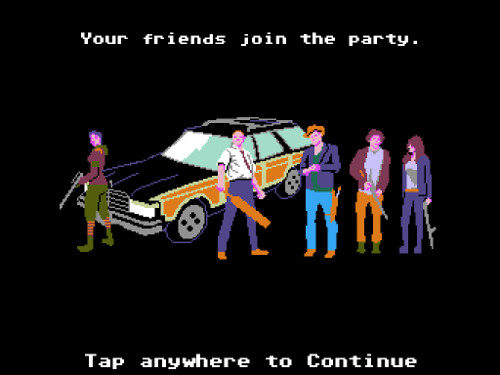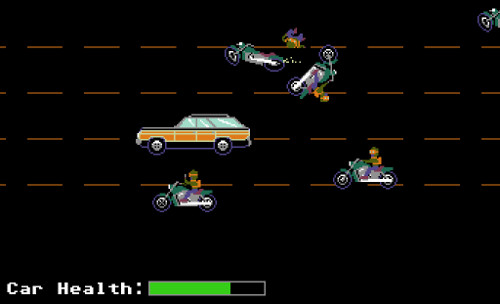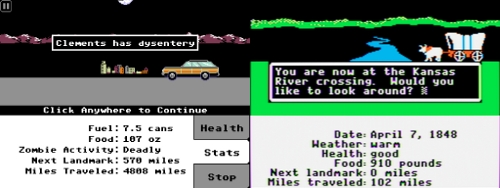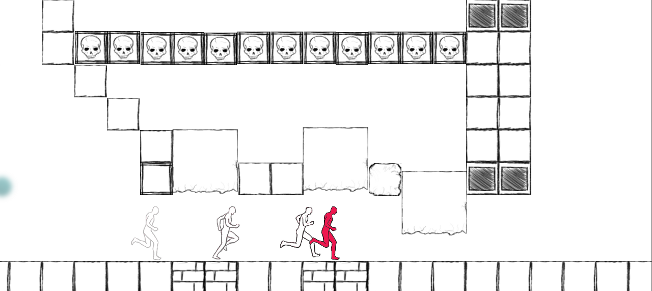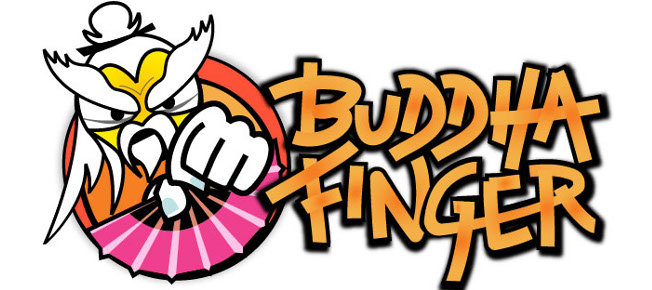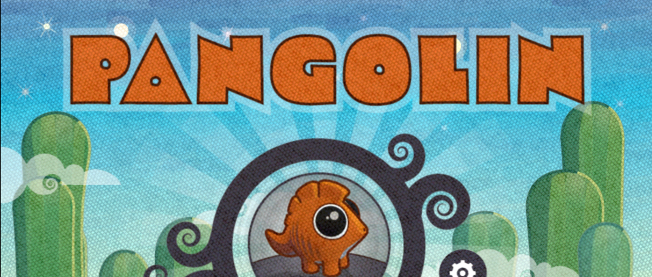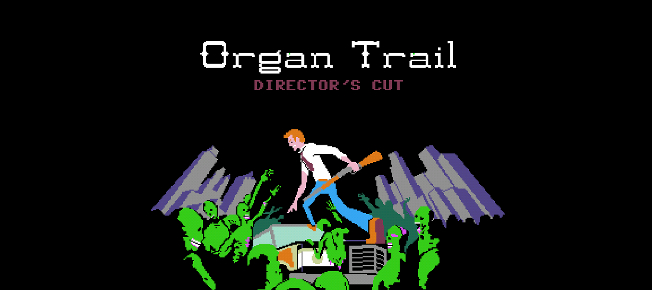
For gamers like myself who grew up in 1980′s America, one of the best parts of the elementary school day was driving a covered wagon through the harsh wilderness. I am, of course, talking about playing Oregon Trail. The game is a lauded example of early gaming, and for many of us it was our first introduction to digital gaming. Chicago-based studio The Men Who Wear Many Hats have taken this classic game and combined it with a genre that’s incredibly popular today. Organ Trail: Director’s Cut manages to honor its predecessor while adding enough new twists and turns to surprise seasoned veterans of the original game.
Organ Trail maintains pretty much the same goal as its forebearer which is to navigate a party of companions from the east coast of America to the promised land in the west. This time around, it’s not to seek fortune and prosperity in California, but simply to escape the zombie apocalypse. Now aboard a station wagon, players make dozens of stops along the journey in order to scavenge for food and supplies or seek a trade. There are also a couple dozen checkpoints in the form of overrun cities and hovels. While the original game used these spots to mark the progress of a growing, pioneering nation, Organ Trail uses the waypoints to show the decline of both society and humanity.
As with Oregon Trail, Organ Trail is not about conquering or dominating. Instead it’s about surviving by any means necessary. Players aren’t going to get the power rush imbued by a first-person shooter, and they won’t find the “a-ha” moment achieved in a puzzle game. Organ Trail is meant to test patience and resolve. No matter which of the difficulty modes the player picks, resources are always stretched to the limit, the vehicle’s always on the verge of breaking down, and party members are constantly being afflicted by maladies. It’s that fight against the “I’m barely holding everything together” feeling – akin to keeping spinning plates aloft – that is the draw to the game. Lessons learned about when and what to sacrifice are acquired through failure, and it is a large part of the appeal of retrying the game with a different selection of starting resources and different decisions being made. There’s also a heavy dose of randomness to what can happen that will make each playthrough different from the last.
Those random events that occur while traveling the road more often than not hurt the player’s party rather than help. Although these events are a hallmark of the original game, it can be frustrating to repeatedly have precious resources fly out of an open window or have a gas can leak. It would’ve been nice to have a more realistic variety of mishaps. Like with Oregon Trail, the vehicle is constantly breaking down and it’s up to the player to try to keep enough spare parts on hand to repair it. Intermittent action sequences like avoiding stampeding deer or knocking over marauding bikers also have the potential to damage the car. It really felt like the bulk of the adventure was spent maintaining the station wagon, rather than the health of the party. Players can use a variable amount of collected scrap for a chance at fixing the car, but even those scenarios seem to defy the success odds displayed on the screen. However, it never felt like the game was intentionally being unfair as repeated playthroughs were sometimes easier or more difficult from area to area each time.
A large part of the appeal of Organ Trail is naturally going to be the nods to Oregon Trail. The presentation of this game is largely taken from the early versions of the Apple 2′s 16-color game. Retro is in – perhaps perpetually so – and seeing reimagined elements like the covered wagon replaced with a slightly less than modern station wagon is a delight not unlike viewing a well-done mod of a favorite shooter. Broken legs and the meme-worthy dysentery return to make appearances. Even a non-gameplay element like the ability to write epitaphs on the tombstones of fallen comrades is back. There’s a really strong correlation between the enjoyment of this game and whether or not the player has played the original series. That’s obviously the intent of the developers considering the play on words evident in the game’s title.
That’s not to say there’s nothing entertaining here for new players or even veteran players. Anyone who plays Organ Trail has a chance to enjoy a game that includes strategy, mini-game-esque action sequences, a trade/market system, and primitive, but tensely exciting shooting sequences. For Oregon Trail pros, the zombie theme alone opens up new possibilities such as whether to put down a stricken party member or try to keep them healthy enough to not turn into the undead (and boost your GameCenter score at the end). Hunting no longer means shooting prey. It means shooting zombies while you scavenge for food and supplies that randomly appear. Taking a closer look at a grave epitaph or a roadside disturbance can lead to humor and/or profit, but it can also result in a surprise zombie attack. There’s really a lot of variety in the different systems that make up the Organ Trail experience. When combined, they create a satisfying, never tiresome game.
When a developer puts their own spin on an established game or franchise, they walk a dangerous line between an homage and an uninspired ripoff. When the gentlemen of The Men Who Wear Many Hats decided to take on a classic like Oregon Trail, they took a big risk. It paid off. While I think the game can be unreasonably punishing at times, and the first release build experiences some crashes, overall it really offers something for everyone. New players and younger gamers get a modern take on a classic revered by thousands, maybe millions. And for those of us who’ve been gaming for a couple of decades now, we get a bit of nostalgia we can take with us on our own journeys.
Organ Trail is currently available for iOS and Android. This review was conducted using the iPad version.
Overall Rating: 




© 2012 – 2013, The Indie Mine. All rights reserved.

